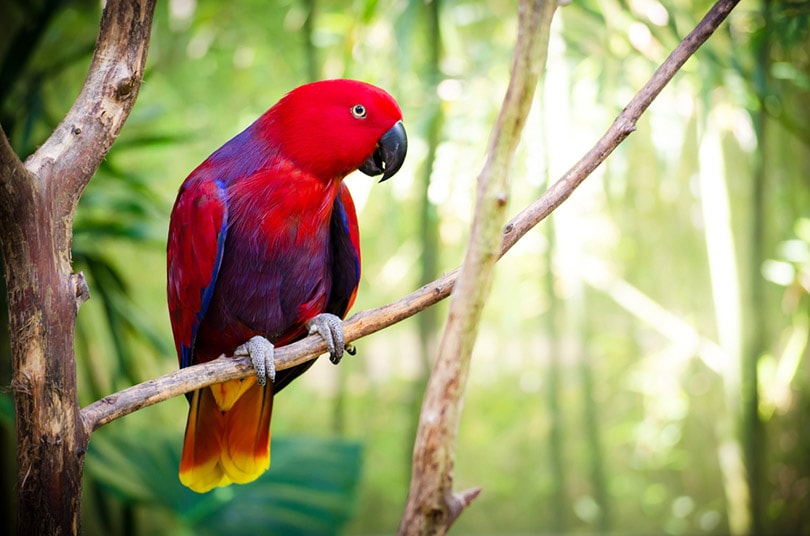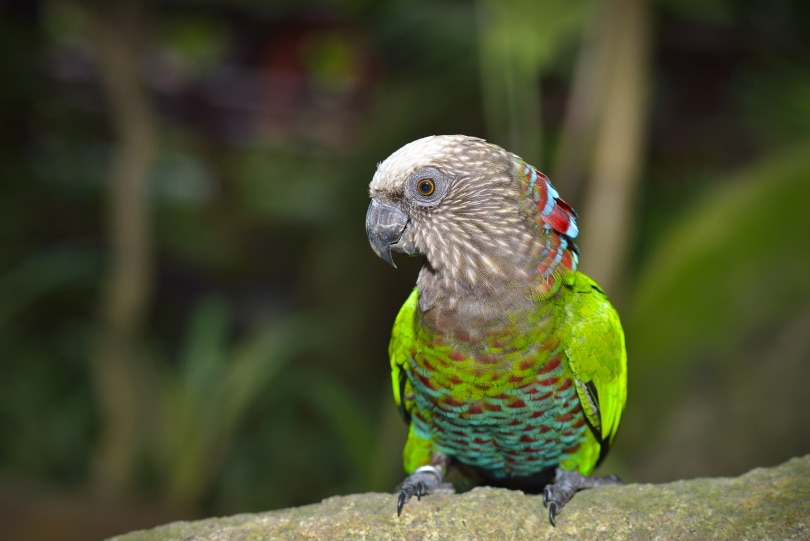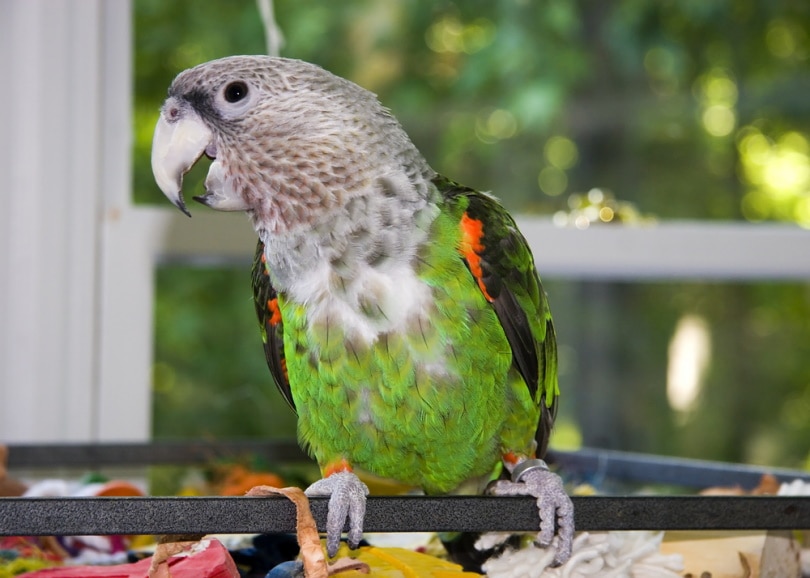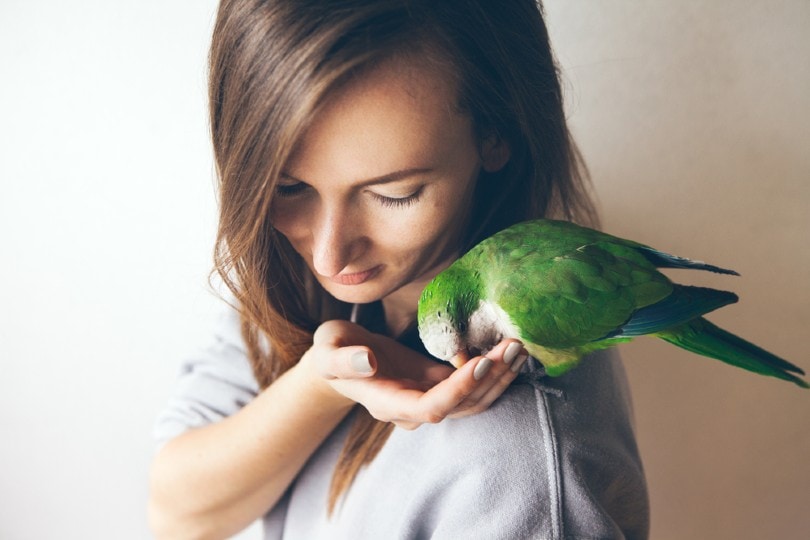
While exotic pets, such as birds, are continuing to grow in popularity, the average pet owner probably still doesn’t know as much about them as they do cats or dogs. This can cause issues if, say, one purchases a parrot without the correct information regarding their personality, traits, or care. To help prevent this from happening to you, check out this article, where we examine 11 parrot myths and misconceptions.
The 11 Myths and Misconceptions About Parrots
1. All Parrots Can Talk
If your main motivation for getting a parrot is to have a talking pet, there’s a chance you could be disappointed in the results. While most parrots have the ability to talk, that doesn’t mean they will use it. Some parrots just never learn how, or if they do, choose not to say anything. Some species, like African gray parrots, are generally more likely to talk than others, but there’s no scientific evidence of why this occurs.
If you have your heart set on a talking parrot, look into adopting an adult bird with confirmed talking ability. Local animal shelters or exotic bird rescues are good places to start.

2. Parrots Don’t Need Much Attention
A common myth for many exotic pets, including parrots, is that they don’t need as much attention as a dog or cat. People may purchase a parrot as a pet hoping they can do the bare minimum to keep them healthy. They may assume that as long as the bird has food, water, and a clean cage, it will be happy.
Parrots are intelligent and social birds who need attention and human interaction regularly. A parrot won’t be happy spending all day in its cage with no exercise or enrichment. Unhappy parrots can develop physical and emotional issues.
3. Only Male Parrots Talk
This myth probably stems from the reality that male parrot species are naturally more vocal in the wild because it’s part of how they attract mates. However, both male and female parrots have the same ability to produce sounds and words.
With some species, it may just take more time and patience to coax these vocalizations out of a female. For example, parakeets and cockatiel males tend to have a broader range of sounds than females. Other species, such as the African gray, has no such difference between sexes. Either can learn to talk, although as we mentioned earlier, not all of them will.

4. Parrots Have Vocal Cords
We know that humans can produce words because they have vocal cords—so, parrots must be the same, right?
Actually, parrots don’t have vocal cords, despite their often impressive ability to mimic human speech. Human vocal cords function with the larynx to produce speech. Birds like parrots use a different structure called the syrinx, located in the trachea. As air moves through this structure, the bird’s vocal tract manipulates the resulting vibrations to create the talking sounds that imitate human speech.
5. Parrots Only Live in Tropical Locations
Parrots are often depicted living in the jungle in books and pictures. Because of this, many people assume that they only live in tropical locations, but this is a myth.
Yes, many parrot species are native to hot and humid climates, but you’ll also find them in more moderate ecological zones. Some also live in the foothills of mountain ranges like the Himalayas and Andes, including above the snow line. One endangered parrot species, the kea, lives exclusively in alpine climates in New Zealand.

6. Parrots are Dirty
Not only parrots, but many pet birds have a reputation for being dirty. A healthy, well-cared- for parrot actually spends a lot of time on its appearance. They groom themselves just like cats do. Many parrots can even learn to keep their waste contained in one corner of their cage. Some parrots do make a bit of a mess while eating, but that’s just part of the process. The birds themselves shouldn’t be dirty unless they aren’t being properly cared for.
7. Caging a Parrot is Cruel
While it is a myth that parrots can spend all their time in their cage, it also isn’t true that caging them at all is cruel. Parrots definitely need daily time out of their cage and will certainly appreciate the space if you can provide them with an aviary. However, they also like having a safe space to rest and feel protected, just like a dog with a crate. In the wild, parrots will have a designated nesting space, and they’ll jealously guard their territory. Proper use of a cage allows them to follow this instinct.

8. Parrots Only Eat Seeds
Wild parrots eat a variety of plant material, including seeds, fruit, nuts, and even farmer’s crops. Pet parrots should never eat only seeds because they don’t provide proper nutrition and can lead to obesity. A pellet diet is preferred, supplemented by safe fruits and vegetables. Seeds should only make up about 20–40% of a balanced diet. Offer a variety of seeds and nuts so your parrot can’t just pick out a few favorites that may not have the nutritional value you’re looking for.
9. Parrots Don’t Understand What You Say to Them
It can be hard to understand a parrot when it talks, but it’s a myth that your parrot doesn’t understand what you’re saying to them. A famous bird researcher named Irene Pepperberg has conducted decades of studies showing that many parrots have intellectual abilities similar to a 5 or 6-year-old human child. They can learn shapes and understand the words for familiar objects. The word “parrot” may mean to mindlessly repeat back speech, but many of these birds operate on a much higher playing field than that.

10. Parrots Don’t Express Their Feelings
Even parrots that don’t talk aren’t an emotional void. Humans are used to vocal expressions of feelings and emotions, but parrots have many other ways to let you know what’s going on in their heads. Body language and vocalizations like whistles, screeches, and chattering are all ways that parrots communicate their feelings with each other and with humans. Though you’ll need to learn from experience and research how to interpret parrot behavior, you can be sure they usually aren’t shy about expressing themselves.
11. Parrots Can Live to be Over 100 Years Old
According to the Guinness Book of World Records, the oldest member of the parrot species was a cockatoo named Cookie who died at nearly 83 years old. Unconfirmed rumors suggest that at least one parrot in the world did live more than 100 years, but this is not common. Parrots do tend to live far longer than dogs and cats, for an average of 50 years for large species—like the macaw, for example. Clearly, making a lifetime commitment to a parrot is a much bigger deal than it is for other pets.
Final Thoughts
As you can see, many common beliefs about parrots are nothing more than myths or misconceptions. Unfortunately, many people bring exotic pets home because they like the way they look, without properly educating themselves about the level of care involved.
Given how long many parrot species live (not quite 100 years, but still a long time), committing to a pet you don’t fully understand is likely to end badly for the bird. Many parrot species make wonderfully social and entertaining pets, but you ought to know what you’re getting into before welcoming one into your home.
Featured Image Credit: Alison Roosenberg, Shutterstock









